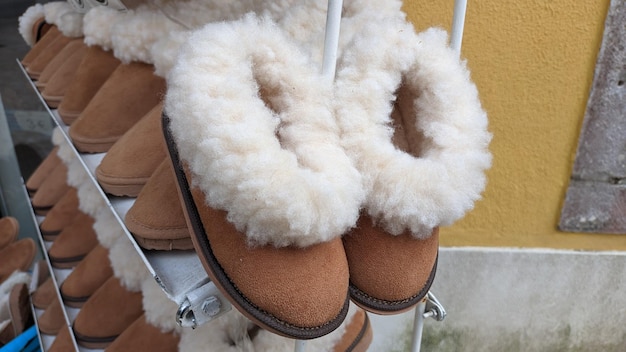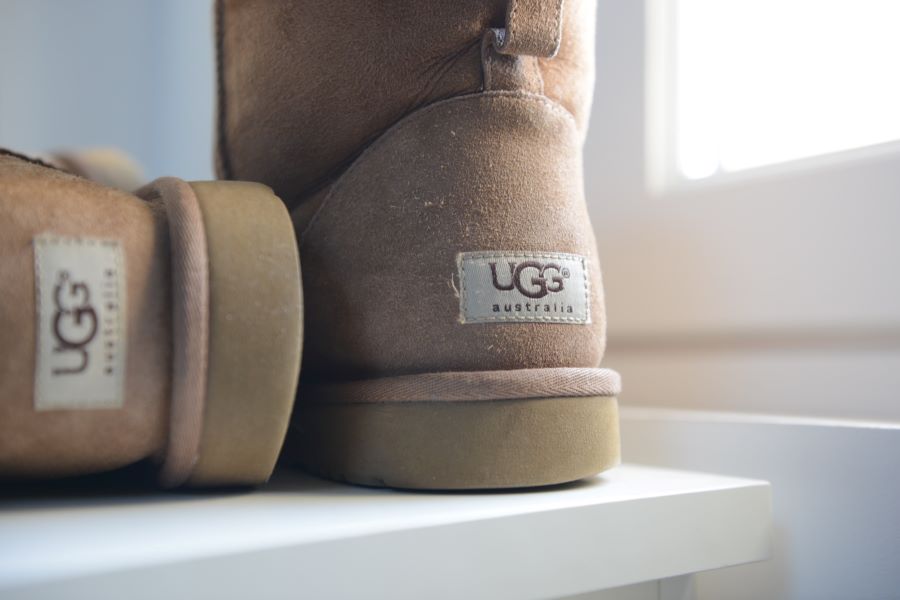Welcome to urgift.co, where we delve into contemporary society, consumer culture and brand social responsibility issues. In this article, we explore the exciting journey of UGG, a brand synonymous with comfort and style. Our readers who want to understand the interplay between a successful brand, societal trends, and ethical business practices will find the UGG story particularly compelling.
Whether you are a fashion enthusiast, student of consumer culture or someone interested in the evolution of global brands. This article promises a glimpse into how UGG became a well-known brand and its impact on the broader consumer context.
UGG’s origins – Australian roots and global rise
The UGG brand has roots in Australian surf culture, dating back to the late 1970s. A young Australian surfer, Brian Smith, brought sheepskin boots to Southern California.
Favored initially by surfers to keep warm after an early morning session, these boots, known for their exceptional comfort and warmth, quickly became part of the community. UGG’s rise from surfer’s secret heat secret to global fashion icon reflects a combination of luck and strategic marketing.
UGG’s first steps on the market
Initial market of UGG’s strategy was to target the surfing communities of California. Word-of-mouth drove the brand’s initial success, demonstrating the product’s quality and appeal to surfers. UGG gradually expanded its reach, maintaining its connection to the surfing heritage while appealing to a broader audience looking for comfort and casual style.

UGG – from surf gear to fashion staple
The evolution of UGGs from surf gear to fashion standards is a remarkable journey. In the early 2000s, UGG underwent a transformation driven by celebrity endorsement and strategic product positioning.
UGG boots symbolized a relaxed but luxurious lifestyle, and the trend resonated with different demographic groups. It was not just about footwear but about a particular lifestyle and comfort.
More than just boots
UGG’s expansion into different product lines, including UGG shoes and UGG slippers, marked a vital diversification strategy. The brand successfully expanded its original product range, creating a comprehensive line to meet different needs and seasons. This diversification strengthened UGG’s position in the market and demonstrated its ability to innovate and adapt.
UGG’s role in consumer culture
The growth of UGG can be seen as a reflection of today’s consumer culture. Its marketing strategies, which focus on comfort, luxury, and purposeful lifestyles, perfectly align with evolving consumer preferences. UGG became a product and a cultural symbol of everyday elegance and easily accessible luxury.
Ethical considerations and brand responsibility
In recent years, UGG has come under scrutiny for ethical and environmental considerations, particularly regarding the sourcing and processing of sheepskin. In addressing these concerns, UGG has taken steps towards more sustainable and ethical practices, an essential aspect for today’s consumers who value brand responsibility.

UGG’s lasting impact
Journey of UGG’s from the beaches of Australia to the fashion hubs of the world reflects a remarkable story of the brand’s evolution. It shows how a simple product can become a cultural phenomenon, influencing consumer behavior and fashion trends.
UGG’s commitment to evolving in line with consumer expectations, particularly regarding sustainability and ethical practices, is exemplary in the fashion industry. The company’s future looks promising as UGG continues to innovate and adapt. With its focus on sustainability and ethical practices, UGG is well-positioned to maintain its status as a favorite brand in a consumer culture that increasingly values responsible and ethical production.
The UGG story proves that strategic branding, product quality, and the ability to adapt to changing consumer situations are compelling. For our urgift.co readers, it is a story that resonates on multiple levels, providing insight into the complex cultural landscape of today’s consumer.
Do you like this article? Then you will also like:

